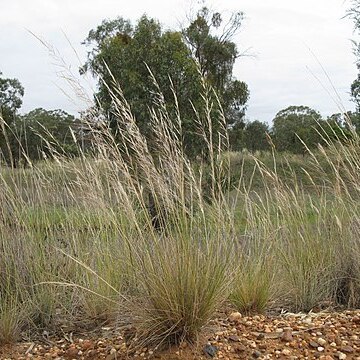Leaves: sheath tight at first, becoming slightly loose, glabrous, scabrous or pubescent; ligule 0.3–1.5 mm long, truncate, ciliate, membranous; auricles glabrous or tufted, sometimes absent; blade folded or inrolled, usually flexuose, 0.7–2 mm wide, smooth to strongly ribbed, glabrous, scabrous or pubescent. Inflorescence to 30 cm long, contracted or open; spikelets scarcely to moderately gaping at maturity. Glumes unequal, 8–15 mm long, acute to acuminate. Callus (1–) 1.4–2 mm long, straight except weakly bent at tip, densely sericeous. Lemma 4–6.5 mm long, smooth to granular upwards, densely white-sericeous; coma obscure or absent; lobes minute–0.5 mm long; awn 30–70 mm long, with column (5.5–) 8–15 mm long, scabrous, and bristle falcate, scabrous to scaberulous. Palea 75–95% length of lemma, obtuse, erose. Lodicules 2, oblong.

